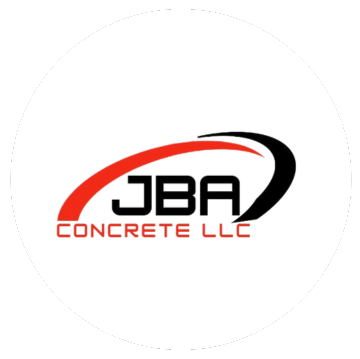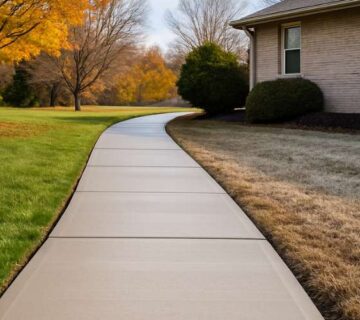Have you ever pulled into your driveway only to notice fresh cracks running along the surface? You’re not alone. What causes a cracked concrete driveway and how to fix it effectively is a concern shared by many homeowners. Whether it’s due to shifting soil, extreme weather, or aging, understanding the root causes can help prevent further damage. In this post, we’ll explore the reasons behind those frustrating cracks and provide practical solutions to keep your driveway in great shape.
Why Concrete Driveways Crack and the Best Ways to Repair Them
Concrete is known for its strength, yet it’s not immune to wear and tear. To properly address what causes a cracked concrete driveway and how to fix it effectively, we need to look at the contributing factors. These include environmental elements, structural issues, and even installation mistakes. Knowing what’s behind the damage is the first step toward restoring and protecting your driveway long-term.
Common Causes of Driveway Cracks
Concrete may seem tough, but it’s vulnerable to many external forces. One of the most common causes of driveway cracks is soil movement. When the ground beneath shifts due to changes in moisture or pressure, the concrete above it can crack under stress. Weather also plays a major role. In areas where temperatures fluctuate rapidly, concrete expands and contracts, eventually leading to surface fractures. Heavy vehicles can strain the slab, especially if it wasn’t reinforced properly during installation. Additionally, if the base layer was not compacted or leveled correctly, the slab won’t have the support it needs to resist cracking. Another often overlooked factor is the absence of control joints, which are vital in giving concrete room to expand safely.
Types of Cracks and What They Mean
Not all cracks are created equal, and understanding the difference can guide you in choosing the best repair method. Hairline cracks are very thin and typically appear due to the concrete drying too quickly after being poured. While these are not a structural threat, they can allow moisture to seep in if left untreated. Structural cracks, on the other hand, are deeper and wider, often resulting from foundational issues or significant soil movement. They indicate more serious damage and should not be ignored. Another pattern you might notice is spider web or map-like cracking, which is usually a surface-level issue caused by shrinkage or temperature changes. Knowing the type of crack you’re dealing with is essential before deciding on the most effective solution.
Effective Repair Methods for Concrete Driveways
Once you’ve identified the cracks, it’s time to fix them properly. Small hairline cracks can be addressed using a concrete filler or crack sealant. After cleaning out any dust or debris, apply the sealant and allow it to cure fully. This helps prevent water infiltration, which could worsen the problem over time. For wider cracks, a concrete patch mix is ideal. The area must be cleaned thoroughly using a wire brush or pressure washer. After prepping the surface, the patch compound is applied, leveled, and left to harden. In cases where cracks are widespread across the entire surface, resurfacing the driveway is often the best solution. This method involves applying a new, thin layer of concrete over the existing one, giving your driveway a fresh appearance and extended lifespan.
When to Replace the Entire Driveway
In some situations, repair may not be enough. If your driveway has multiple deep or structural cracks, is sinking in several areas, or has received several failed repair attempts in the past, replacement might be the most practical option. Though more costly upfront, a new driveway ensures a fresh, stable foundation with proper reinforcement and drainage. This investment can prevent years of ongoing patchwork and future repairs, offering peace of mind and added curb appeal to your property.
Preventing Future Driveway Cracks
Preventative maintenance plays a vital role in extending the life of your concrete driveway. One of the most effective strategies is sealing your driveway every two to three years. This creates a protective barrier that helps resist moisture, chemicals, and surface wear. Avoid parking heavy vehicles on areas not designed to carry such loads. Proper water drainage is also crucial. Make sure your gutters and downspouts divert water away from the driveway’s base. Another smart move is to include control joints during installation, which allow the concrete to shift slightly without cracking. These preventative measures are simple yet powerful ways to keep your driveway strong and crack-free.
Should You DIY or Call a Pro?
While many minor cracks can be handled with DIY repair kits, deeper or more complex issues require professional help. Contractors bring the tools, materials, and expertise necessary for long-lasting results. They can also assess whether there’s a deeper structural problem that needs addressing. If you’re unsure about the severity of a crack or if past repairs have failed, it’s wise to call in an expert. A proper evaluation can save you time and money by ensuring the issue is fixed correctly the first time.
Restore Your Driveway the Right Way
Now that you understand what causes a cracked concrete driveway and how to fix it effectively, it’s the perfect time to take action. Whether your driveway needs a simple patch or a full resurfacing, early intervention makes all the difference. Don’t let minor cracks grow into costly repairs. Contact our experienced team today for a professional inspection and expert repair services that stand the test of time.





No comment